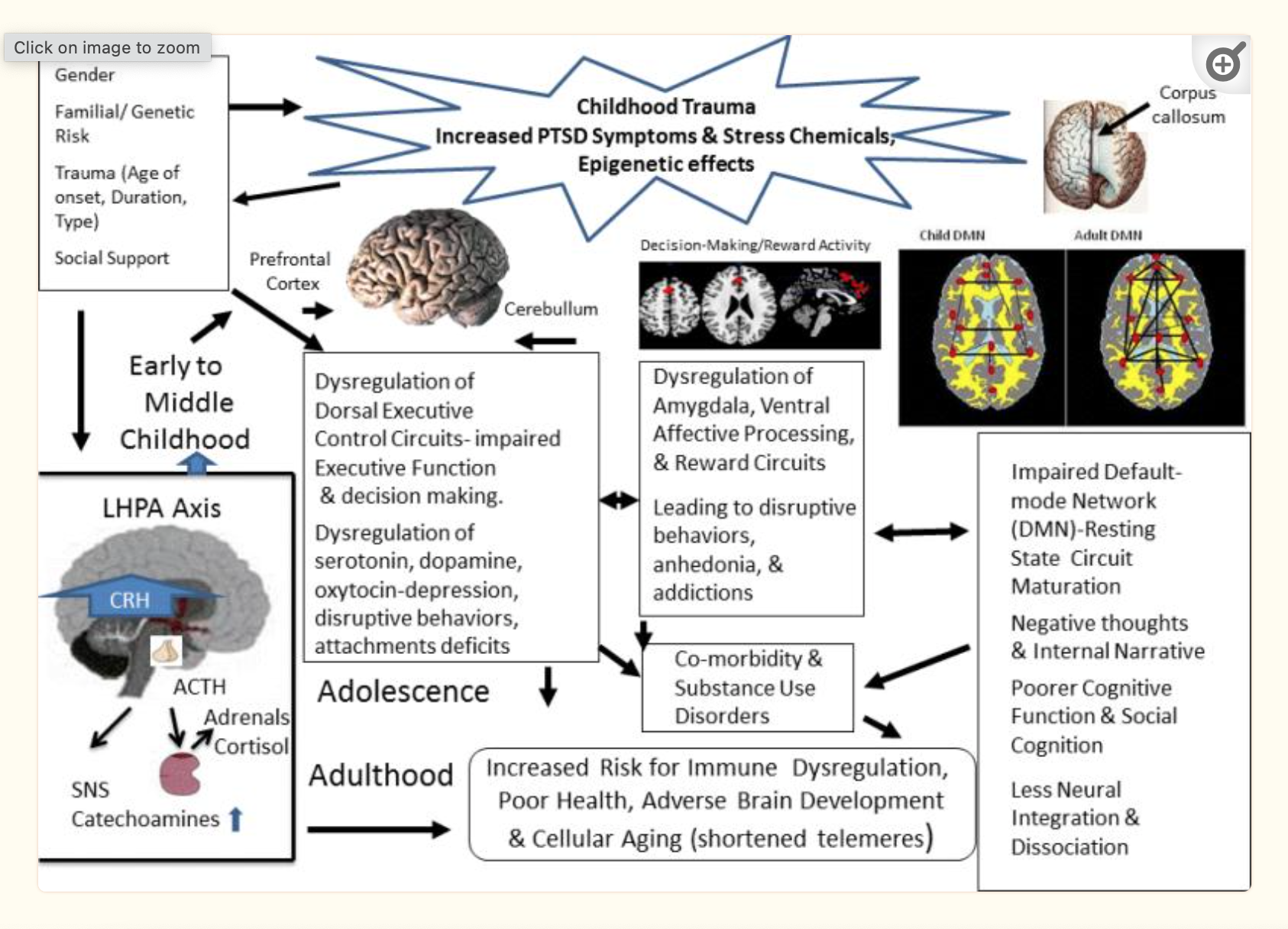In this article, we continue our series on The Six Pillars of Lifestyle Medicine. Thus far, we’ve covered two pillars - nutrition and exercise and now we’re discussing stress management. Effective stress management is vital for health as too much stress on the mind and body results in negative health outcomes. We interviewed DPC health practitioner, Adam Courchaine, PA-C, MPAS, President of NuMed Direct Primary Care based in Centennial, Colorado for more insight on adequate stress management.
In the traditional healthcare system, providers tend to focus on physical health indicators, which often lag behind chronic stress and mental health issues. It is not sufficient to focus on physical health without seeking answers from the deeper questions around purpose, life satisfaction, relationships, and behavioral health indicators that go beyond whether a person is depressed or suicidal.
Unfortunately, there is a culture of relieving symptoms in medicine, with clinicians that are swift to prescribe medications such as antidepressants instead of taking more time with patients to uncover the root causes of health problems. With DPC, since doctors have more time to build solid relationships with their patients, they have the opportunity to seek alternatives for sustainable positive health outcomes.
What happens when we are under stress?
In a stressful situation, your brain involuntarily prepares your body via the autonomic nervous system (sympathetic and parasympathetic) after the amygdala (reptilian brain) sends a distress message to the hypothalamus (control center of the brain) to respond. Your sympathetic nervous system increases your heart rate, blood pressure, brings in more oxygen through rapid breaths, and releases more glucose into the bloodstream (your liver breaks down more glycogen to do this) for more energy while your endocrine system delivers stress hormones: epinephrine (adrenaline), norepinephrine, and cortisol to the bloodstream. The parasympathetic nervous system is what signals your body to slow down and return to baseline after the threat has passed.
The sympathetic nervous system activation, commonly known as fight or flight, is the body’s way of protecting itself in a dangerous situation, where a decision needs to be made in a split second or seconds in order to survive. The other responses that can be triggered when you’re under stress, include a freeze or fawn response. Adam gives us the example of a thief that follows you to an alley and demands your wallet. You can fight him and refuse to hand your wallet over or try to run away - flight. Whereas with the freeze response, you completely shut down and are helpless, so the thief just takes your wallet or with the fawn response, you attempt to appease the threat by giving the thief your wallet and offering other valuables such as your watch, etc.
Imbalance of stress triggers and responses
Stress is completely relative and it has to do with the way we are wired. Traumatic events such as “motor vehicle accidents, bullying, terrorism, exposure to war, maltreatment (physical, sexual, and emotional abuse; neglect) and exposure to domestic and community violence” experienced during childhood have a profound and lasting effect on our brains and physiology resulting in post-traumatic stress disorder (PTSD) and post-traumatic stress symptoms (PTSS). However, these same traumatic events experienced as adults also have substantial effects and can lead to PTSD and PTSS. There is undoubtedly a greater risk for PTSD and PTSS as adults if there was trauma experienced as children. For example, childhood trauma is a risk factor for PTSD as an adult after a combat experience.

We need stress to live, but too much stress causes inflammation, which leads to chronic illness. Too much stress looks different for each individual, therefore a certain level of self-awareness is paramount in order to understand when we are at our threshold for managing stress effectively. Not all stress is bad as we need a certain amount of stress to inform us to make a change. Stress is necessary for the body to develop muscle and to grow and strengthen bones as well as for the mind, in the case of staying alive in a life-threatening situation or pushing ourselves for better performance. A little release of stress hormones may be beneficial to have more mental clarity and alertness for an important presentation or exam for instance.
However, the dilemma with the stress of the mind is when the sympathetic nervous system is activated and sustained, but no physical action taken, either because there is no real threat to fight or flee from or because an individual is unable to take the appropriate action in response. This inappropriate balance of the body getting flooded with stress hormones and glucose, but the body not using them over time leads to inflammation resulting in disease and mental illness. The autonomic nervous system is designed for acute use, but it often gets applied to prolonged situations resulting in overuse. This could be feeling stressed to meet a work deadline that is coming up in a few days or worrying about making enough money to cover the mortgage or rent next month.
“In a perfect world, we train ourselves to deal with situations, but [in] modern culture, some of it is just not a real threat anymore, it’s just a perceived threat.” Adam discusses a Navy seal, who is highly trained to assess stressful and dangerous situations for survival, returning to civilian life and crashing into a car that cuts him off out of anger as an illustration of a perceived threat and an inappropriate response (fight).
Adam is an active duty army officer who was previously deployed in 2017 to the Middle East and in 2020 to Kosovo as a National Guard PA and now serves as an Aeromedical PA with an Aviation Battalion. Thus, he shared an experience of a simulation that he was a part of for training that included the sound of bombs and people screaming. As soon as the training began another participant who was a medical student completely froze and could not move. Adam had to take her back to the truck and she was shaking. Her brain interpreted the simulation as a real threat and she could not process it. Later on, she could not recall the traumatic event.
Many of Adam’s patients are police officers and firefighters who describe feeling fine when they are engaged in the fight in the line of duty but report discomfort afterward when reviewing body cams and/or writing reports. This is because of the disconnect with the body still receiving the hormones and blood sugar spikes from the brain, but the body no longer being in action. When this continues over time, it can result in negative health outcomes such as high blood pressure, diabetes, depression, and anxiety to name a few.
Becoming more mindful to manage stress
The mind and body connection can’t be ignored when it comes to managing stress effectively and achieving optimal health outcomes. The disconnect between the body being in the present while the mind is stuck in the past (depression) or the future (anxiety) makes us feel unbalanced and this is often how chronic stress develops.
I asked Adam Courchaine, PA-C, MPAS how we can accurately examine the sources of stress in our lives. And he said, “to be mindful.” It is crucial to be self-aware and know when something doesn't feel right in your body and then attempt to find the source and if you can do something about it, then great, but if you can’t, moving your body and doing something you enjoy is a great antidote for the stress.

“When we become mindful and present, usually there is no problem that is too big.” - Adam Courchaine, PA-C, MPAS
Many people don’t even recognize that they are stressed because it becomes a new baseline or “normal” for them. Unrecognized stress or not being able to do anything about the stress is what causes chronic stress.
As a small business owner, Adam Couchaine, PA-C, MPAS wears all the hats and drives himself to do more, but at the same time, he is mindful. “I did this because I wanted to accomplish this, but I also need to take care of me,” he says.
Adam describes a patient of his who is a young mom and takes care of everybody, but herself. She shared that she feels guilty for going to the gym because she thinks she should be taking care of the kids, but Adam pointed out that “if you don’t take care of you, then you’re not strong enough to take care of others.”
“Stop answering to other people and answer to yourself. If it doesn’t feel right, that’s how you know things are starting to get out of control.” - Adam Couchaine, PA-C, MPAS
When you become mindful, even when things go wrong, you can guide yourself to feeling good again and getting back to the top of your game. The stress works for you and not against you. Your mind and body are in sync in the present moment and you have complete acceptance of where you are and that it is exactly where you are supposed to be.
Sources:
Understanding the Stress Response - Harvard Health
The Biological Effects of Childhood Trauma - National Library of Medicine

